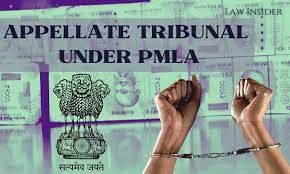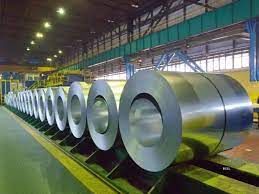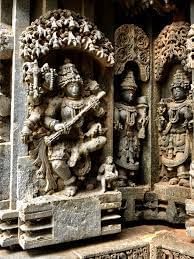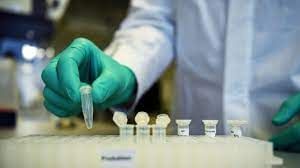UPSC Daily Current Affairs- 3rd March 2023 | Current Affairs & Hindu Analysis: Daily, Weekly & Monthly PDF Download
GS-I
13th Century Hindu Temple
Why in News?
Recently, a 13th-century Hindu temple was discovered at Pushpagiri Kshetram in the Kadapa district.
About Kayastha rulers:
- The Kayasthas (1239 AD - 1297 AD) were subordinates to the rulers of the Kakatiya dynasty.
- In the history of the Kakatiyas, the Kayastha played a prominent role both as loyal subordinates and traitors.
- It is believed that they originally belonged to a class of warriors of Western India.
- They ruled the region with Vallur as the capital.
- Some rulers of this community were -Ganagaya Sahini (1239 - 1258 AD), Jannigadeva (1258 - 1268 AD), and Ambadeva II (1272 - 1294 AD). The last ruler was Trupurari II (1294 - 1297 AD).
Pushpagiri Kshetram:
- Pushpagiri is referred to as Hari-Hara Kshetra, as there are a number of temples dedicated to both Shiva and Vishnu.
- It is located on the banks of the Pennar river.
- Pushpagiri is also called the second Hampi due to its beautiful architecture.
Source: The Hindu
Ancient city of Sisupalgarh

Why in News?
Land mafias have damaged a portion of the wall of the fortified ancient city of Sisupalgarh.
About Sisupalgarh:
- It is located near the city of Bhubaneswar in Odisha.
- It was once the capital of Kalinga, which is the ancient name of Odisha.
- It is considered one of the largest and best-preserved ancient fortifications inIndia.
- The fortifications are over 2,000 years old and date back to the 3rd or 4th century BC.
- The remains of the fortification were discovered in 1948 by the Indian archaeologist B.B. Lal.
- Features:
- It was designed and constructed in a complete square shape that was surrounded by defensive walls.
- Each side spreads for over half a mile, and the interior is full of stone ruins and sculptures.
- The walls of the fortification are a little over nine meters (30 feet) tall.
- There were eight gateways into the city, two in each of the four sides of the wall.
- The gateways were connected by streets in a grid-like arrangement with the palace in the center.
- The gates were elaborate structures made of brick and stone.
- There is evidence of stone-lined reservoirs that were likely used for harvesting rainwater.
- Intelligent traffic management, pedestrian-friendly pathways, grand gateways with guard houses, wide roads, and a vast open space were some of the key features of this ancient city.
- The city is believed to have a population of around 20,000 to 25,000.
Source: The Hindu
GS-II
Indo-German Relations
Why in News?
Recently, German Chancellor Olaf Scholz came to India on a bilateral visit.
Key outcomes of the bilateral meeting
Green and Sustainable Development Partnership (GSDP):
- GSDP is an umbrella partnership that provides political guidance and steer to robust ties in climate action and SDGs.
- Under this, Germany will place €10 billion in new and additional commitments under their development cooperation portfolio in India.
- India-Germany agreed on a vision statement to Enhance Cooperation in Innovation and Technology.
- Under the framework of the Inter-Governmental Agreement on ‘Cooperation in Scientific Research and Technological Development’, the two countries share a long history of cooperation in science and technology, research and innovation.
Cooperation in Green Hydrogen:
- For this, the Indo-German Green Hydrogen Task Force was constituted in September 2022.
Triangular Development Cooperation:
- India and Germany agreed to work on development projects in third countries.
- Both sides concluded agreements on “Digital Transformation, FinTech, IT, Telecom and Supply chains’ diversification”.
Indo – German Bilateral Relations:
- Germany is one of India’s most important partners in Europe owing to the strength of bilateral relations, as also Germany’s key role in the EU.
- India was among the first countries to establish diplomatic ties with the Federal Republic of Germany after the Second World War.
- On March 7, 2021, India and Germany marked the 70th anniversary of the establishment of diplomatic relations.
Trade and economic relations:
- Germany is India’s largest trading partner in Europe, with a total trade of USD 21.07 Billion in 2020-21, occupying 17.4% of share in European Market.
- Germany is the 7th largest foreign direct investor in India since April 2000.
- Germany’s total FDI in India from 2000 until 2019 amounted to US$ 11.9 billion.
- Germany has a Bilateral Trade and Investment Agreement (BTIA) with India via the EU.
Multilateral Cooperation:
- Germany and India support each other on UNSC expansion within the framework of the G-4.
- Germany joined the Coalition for Disaster Resilient Infrastructure (CDRI) in February 2020 and participated in the first Governing Council meeting in March 2020.
- In April 2021, the German Federal Cabinet approved the signing of the amended framework agreement of the International Solar Alliance (ISA), and thereby Germany’s accession to the ISA.
Defence co-operation:
- India-Germany Defence Cooperation Agreement (2006) provides a framework for bilateral defence cooperation.
- Both the countries signed the Arrangement on Implementation of the Agreement, concerning Bilateral Defence Cooperation which enables both the countries to share classified information with each other
- Indian and German navy ships regularly conduct anti-piracy operations in the Indian ocean.
- The first ever Franco-Indian-German military exercise is expected to take place in 2024.
Science and Technology:
- Bilateral Science and Technology cooperation is implemented under an Inter-Governmental Agreement on ‘Cooperation in Scientific Research and Technological Development’ signed in May 1974.
- The Department of Science and Technology (DST) and the German Federal Ministry for Education and Research (BMBF) are the nodal agencies for overall coordination.
- An apex Indo-German Committee on Science and Technology, established in 1994 coordinates the implementation of cooperation and joint review of activities.
Culture and Indian diaspora:
- The translation of Kalidas’s ‘Shakuntala’ in 1791 envisaged institution-based scientific research on sacred Indian texts for the quest of Indian philosophy and literature.
- Max Mueller was the first scholar of Indo-European languages to translate and publish Upanishads and Rigveda.
- There are around 03 lakh (December 2021) Indian passport holders and Indian-origin people (about 1.60 lakh NRIs/Indian Passport holders and around 43,000 PIOs) in Germany.
Issues associated with bilateral relations:
- Germany’s low trade: Germany’s trade with India is less than ten percent of its trade with china.
- Restrictive Policies: Germany has an advanced defence manufacturing comparable to that of France, but the defence exports are less than potential because of restrictive arms export policy
- Lack of a separate bilateral investment treaty between the two countries hampers the commercial potential between two countries.
- Germany is not confident about India’s trade liberalization measures; it bats for more liberal labour regulations.
Way Forward:
At present, in spite of various setbacks, the Indo-German relations have made a rapid stride. The ‘policy of benign neglect’ had changed into a more ‘vibrant partnership’. Indo-German cooperation should be based on a win win situation so that both countries can help each other in improving their economic, technological, defence and political position in the international arena.
This is not a difficult task as Germany are India are “natural allies”. While Germany has surplus capital, modern technology and a demographic deficit, India has a deficit of capital, lacks modern technology and has exportable human capital.
Source: The Hindu
PMLA Appellate Tribunal

Why in News?
Recently, Delhi High Court has directed the Union Government to take expeditious steps for appointing Chairperson and other members of the Appellate tribunal under PMLA 2002.
About PMLA Appellate Tribunal:
- The Central Government has been given the power to set up an Appellate Tribunal under the Prevention of Money Laundering Act, 2002 (PMLA).
- Composition: The Tribunal consists of a Chairperson and two other Members.
- Qualifications for appointment:
- A person shall not be qualified for appointment as Chairperson unless he is or has been a Judge of the Supreme Court or of a High Court judge or is qualified to be a Judge of the High Court.
- A person shall not be qualified for appointment as a Member unless he/she has been a member of the Indian legal service/Indian revenue service/Indian economic service/Indian Customs and central excise service/Indian Audit and accounts Service.
- Tenure: They are appointed for a term of five years or till the age of 65 years, whichever is earlier.
- Functions: Appellate Tribunal has been constituted to hear appeals against the orders of the Adjudicating Authority and the authorities under the PMLA.
Prevention of Money Laundering Act, 2002:
- PMLA, 2002 was enacted in January 2003 to prevent money laundering in India.
- Objective:
- To prevent and control money laundering.
- To confiscate and seize the property derived from, or involved in, money laundering.
- To provide punishment for the offense of money laundering.
- To appoint the Adjudicating Authority and Appellate Tribunal to deal with the matter connected with money laundering.
- To put obligations on banking companies, financial institutions, and intermediaries to maintain records.
- To deal with any other issue connected with money laundering in India.
- PMLA empowers certain officers of the Directorate of Enforcement to carry out investigations in cases involving the offense of money laundering and also to attach the property involved in money laundering.
Source : The Hindu
GS-III
Dengue and DNA vaccines
Why in News?
Recent research announced that India’s first and only DNA vaccine for dengue has shown promising results.
About Dengue:
- Dengue is a vector-borne disease transmitted by the bite of an infected female Aedes Aegypti mosquito.
- The mosquito becomes infected when it feeds on the blood of a person infected with the virus.
- There are 4 serotypes of the virus that causes dengue. These are known as DEN-1, DEN-2, DEN-3, and DEN-4.
- Dengue cannot be spread directly from person to person.
- Most cases occur in tropical areas of the world, including the Indian subcontinent, Southeast Asia, Southern China, Taiwan, the Pacific Islands, the Caribbean, Mexico, Africa, and Central, and South America.
Symptoms include: High fever, Headache, Vomiting, Muscle and joint pains, Skin Rash
- The diagnosis of dengue infection is done with a blood test.
- WHO estimates 39 crore dengue virus infections per year, of which 9.6 crore show symptoms.
About DNA Vaccines :
- DNA vaccines are often referred to as third-generation vaccines.
- They use engineered DNA to induce an immunologic response in the host against bacteria, parasites, viruses, and potentially cancer.
- The vaccines that are currently available to the global population include those for measles, mumps, rubella, seasonal influenza virus, tetanus, polio, Hepatitis B, cervical cancer, diphtheria, pertussis as well as several other diseases that are endemic to certain regions of the world.
Working :
- DNA vaccines induce an adaptive immune response.
- The basic working principle behind any DNA vaccine involves the use of a DNA plasmid that encodes for a protein that originated from the pathogen in which the vaccine will be targeted.
- More specifically, these vaccines expose the immune system to the target pathogen elements, which allows the immune system to develop antibodies that can recognize and attack this infectious agent if the vaccinated host encounters this pathogen in the future.
DNA Vaccine and COVID-19:
- In September 2021, India gave emergency authorization to the world’s first DNA vaccine for human use called ZyCoV-D.
- The vaccine was developed by the Zydus Cadila pharmaceutical company.
- It was approved for emergency use in adults and in children 12 and older.
Advantages of DNA Vaccine:
- They can be developed quickly.
- They are easy to transport and store.
- It’s less expensive to make and purify large amounts of DNA from viruses or bacteria than to create traditional vaccines.
Disadvantages of DNA Vaccines:
- Limited approvals: as of 2021, the FDA had approved the DNA vaccine only for use in certain animal diseases, such as West Nile Virus in horses and melanoma in dogs.
- More research into the use of DNA vaccines against COVID-19 and other diseases caused by viruses or bacteria is required.
- Scientists still do not properly understand much of the immune response caused by DNA vaccines. Limited data is available on their safety, possible side effects, and effectiveness.
Source: DOWN TO EARTH
Exercise SHINYUU MAITRI

Why in News?
The Indian Air Force is participating in Exercise Shinyuu Maitri with the Japan Air Self Defence Force(JASDF) between 01 and 02 March.
About Exercise SHINYUU MAITRI:
- It is the joint Air force exercise between India and Japan which is being conducted at Komatsu Island, Japan this year.
- The exercise gives an opportunity to interact and study each other’s operational philosophies, best practices and also enhance mutual understanding and interoperability between the IAF and the JASDF.
- The IAF contingent is participating with one C-17 Globemaster III aircraft.
- The exercise is being conducted at a time when the IAF’s heavy lift transport aircraft fleet is also taking part in Exercise Desert Flag VIII in UAE and Exercise Cobra Warrior in the UK.
Other Exercises between India and Japan:
- Malabar:India and Japan with the United States and Australia participate in the naval war gaming exercise named Malabar.
- JIMEX: Naval Exercise
- Dharma Guardian:Military exercise
Source: Indian Express
Decarbonizing India: Iron and Steel Sector report

Why in News?
About Decarbonizing India: Iron and Steel Sector report:A new report by the Centre for Science and Environment (CSE) claims that India’s iron and steel sector can produce fewer emissions and increase its output at the same time.
- The iron and steel sector is a hard-to-abate sector in terms of greenhouse gas emissions, but it is an equally critical contributor to the economic development of the country.
- India is the second-largest producer of crude steel in the world and plans to almost triple its production by 2030
- The report(Decarbonizing India: Iron and Steel Sector) was released by the Centre for Science and Environment (CSE).
- According to it India’s iron and steel sector can produce fewer emissions and increase its output at the same time.
- The analysis shows that it is possible to bring down carbon dioxide (CO2) emissions from our iron and steel sector drastically by 2030, while more than doubling India’s output of steel.
- emissions from crude steel production are estimated to grow to almost 2.5 times by 2030.
- This report provides a detailed insight into the GHG emissions of the iron and steel sector and its future emission scenarios for 2030 -the report provides, based on available information, unit and company-wise data on emissions, which will help design the road ahead.
- The report suggests a roadmap for the sector, highlighting the pathways for GHG emissions reduction. The assessment clearly finds there are huge opportunities to bend the carbon dioxide curve for this emission-intensive sector, but it will need planning, technology and adequate funds.
- India surpassed Japan as the second top steel producer in 2019.
- India was the world’s second-largest steel producer.
- China remains the world’s largest crude steel producer .
- India is the largest producer of sponge iron in the world and the 3rd largest finished steel consumer in the world after China & USA.
- The Government has taken various steps to boost the sector including the introduction of the National Steel Policy 2017 and allowing 100 per cent Foreign Direct Investment (FDI) in the steel sector under the automatic route.
- The beginning of the Iron and steel industry was in 1907 with the setting up of the TISCO plant at Jamshedpur.
- The development of the Iron and Steel industry was envisaged during the first five-year plan (FYP), but it was during the second FYP that three integrated projects were started at Bhilai (with erstwhile USSR technical and financial support), Rourkela (with German assistance) and Durgapur (with U.K assistance)
- During the third FYP, the Bokaro steel plant was started (production started in 1972)
- Steel Authority of India (SAIL) Established in 1973, SAIL is a government undertaking and is responsible for the management of steel plants
- The Chota Nagpur plateau is home to all of India’s major steel-making centres, which are spread across four states: West Bengal, Jharkhand, Orissa, and Chhattisgarh.
- TISCO -Jamshedpur, Jharkhand
- The Visvesvaraya Iron and Steel Plant -Bhadravati, Karnataka
- Bhilai Steel Plant – Chhattisgarh
- Rourkela Steel Plant-Odisha
- Durgapur Steel Plant- West Bengal
- Bokaro Steel Plant-Jharkhand
- Salem Steel Plant-Tamil Nadu
- Visakhapatnam Steel Plant- Andhra Pradesh
Source: Down To Earth
|
63 videos|5408 docs|1146 tests
|
FAQs on UPSC Daily Current Affairs- 3rd March 2023 - Current Affairs & Hindu Analysis: Daily, Weekly & Monthly
| 1. What is the GS-I exam? |  |
| 2. What is the GS-II exam? |  |
| 3. What are the key topics covered in the GS-III exam? |  |
| 4. What is the importance of current affairs in the UPSC exams? |  |
| 5. How can I prepare for the GS-I, GS-II, and GS-III exams effectively? |  |
























